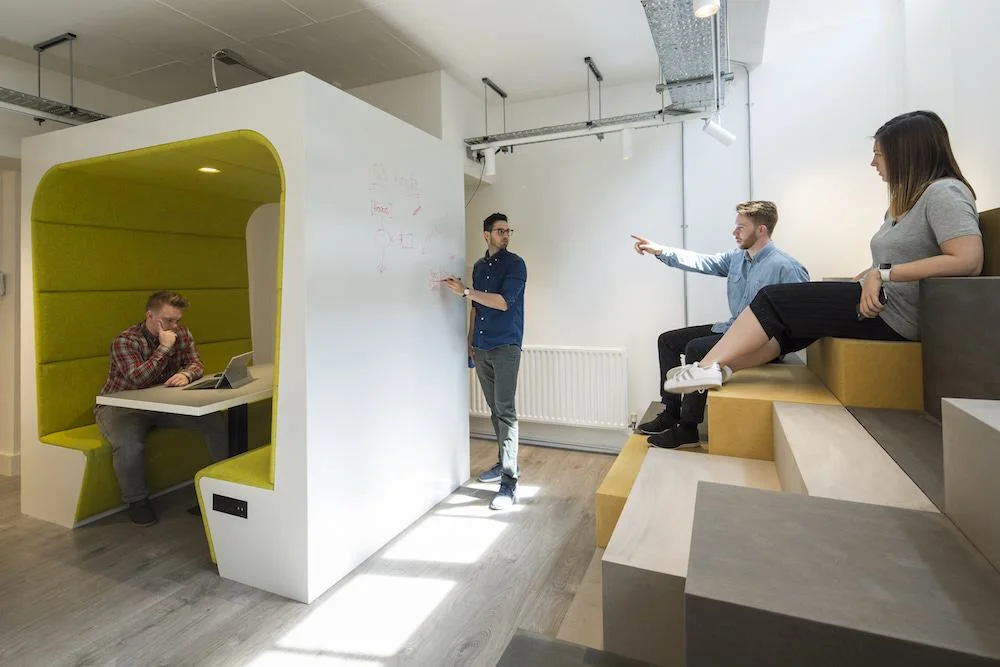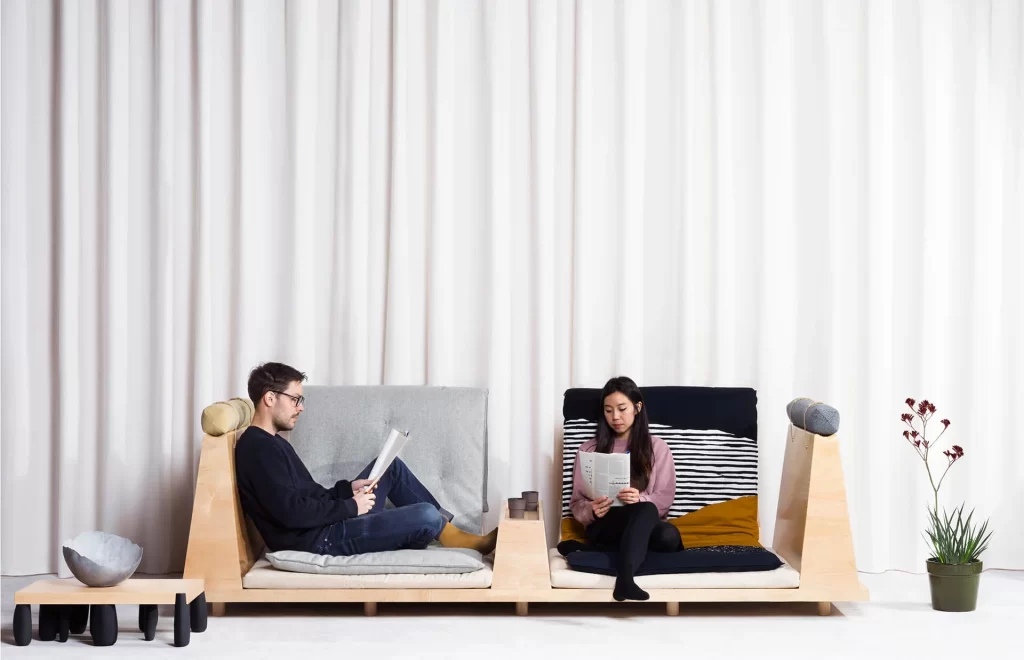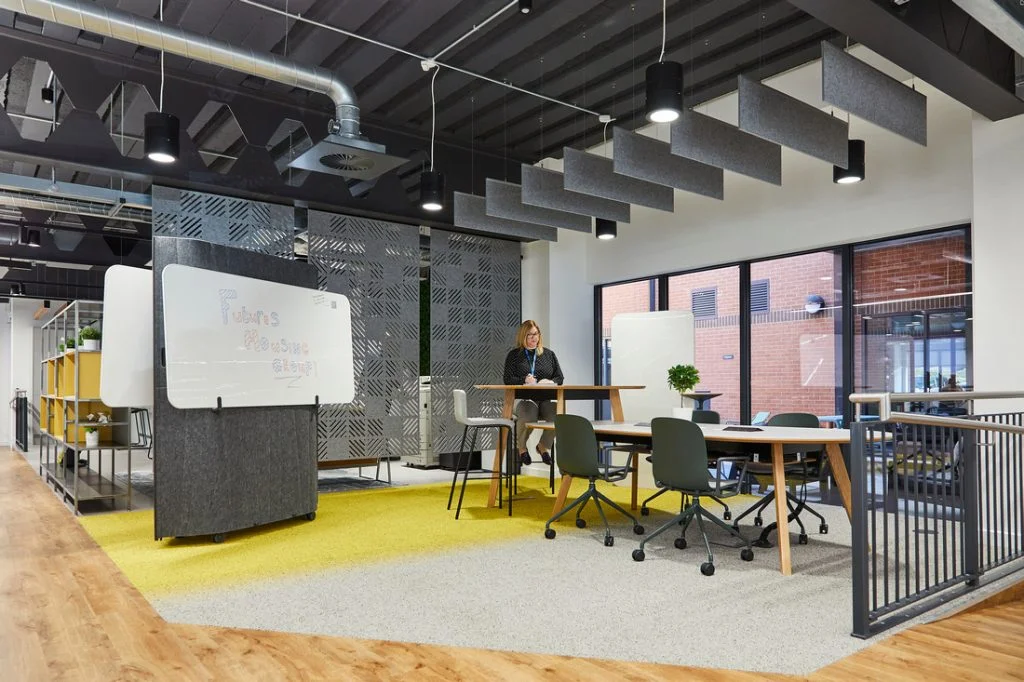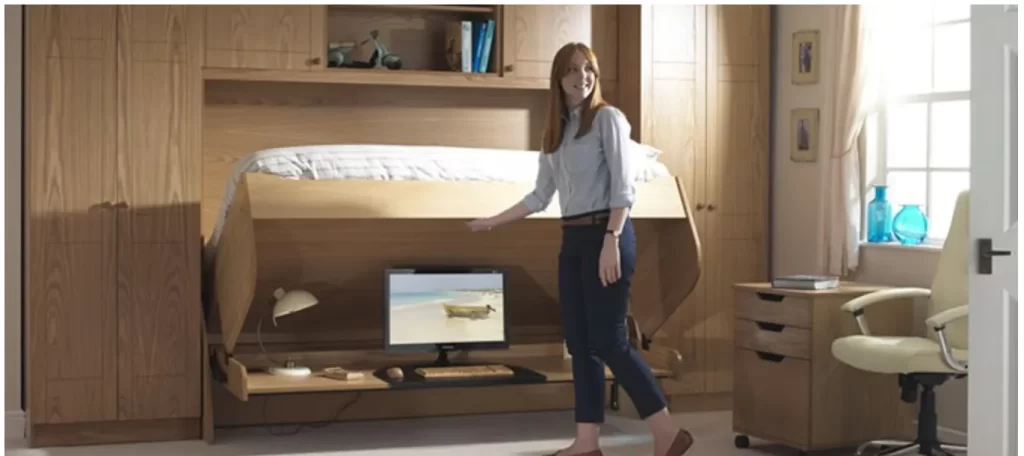In today’s changing work and living spaces, there’s a growing need for furniture that can also adapt to different uses. Modern homes and offices require designs that are flexible, multifunctional, and space-saving while also looking good and being comfortable. Adaptable furniture solutions, including versatile workstations and ergonomic office furniture, have become essential for modern office designs. They not only make the most of limited space but also support dynamic office setups and flexible work environments, leading to increased efficiency and productivity in both homes and commercial spaces.
We will explore the development of adaptable furniture solutions in modern living spaces. It looks at the main reasons behind their growing popularity, such as the demand for adjustable workstations in flexible workspaces.
It also highlights innovations in adaptable furniture design, showcasing how modular office furniture and collaborative workspace furniture are changing the way modern offices are set up. The article also focuses on popular adaptable furniture pieces, discussing innovative office furniture that incorporates technology to create transformable office spaces. Overall, this exploration emphasizes the importance of adaptable furniture solutions in creating ergonomic, space-saving, and productive environments.
Related: Find out the essential office furniture you need to improve your physical well being here.
The Evolution of Adaptable Furniture Solutions in Modern Work Spaces
Adaptable Furniture: More Than a Trend

The concept of adaptable furniture has evolved from a niche idea into a cornerstone of modern interior design. Recognizing the multifaceted roles a home plays today – from a place of rest to a workspace and social hub – the demand for flexible design solutions has surged. Living spaces are increasingly designed with the philosophy of flexibility, adaptation, and efficient use of space, enabling them to accommodate various activities without the need for dedicated rooms for each. This shift towards adaptable living spaces reflects a broader change in lifestyle, where the lines between home and work, indoors and outdoors, are increasingly blurred.
From Tradition to Modernity: How Adaptable Furniture Fits Into Today’s Homes
The journey from traditional to modern living spaces has been marked by significant design innovations. The mid-century modern movement introduced minimalist designs that emphasized form and function, laying the groundwork for contemporary furniture design. Today, multifunctional furniture, often referred to as the Swiss army knife of interior design, serves multiple purposes, offering the flexibility to change while also acting as a focal point in living spaces.
These pieces, characterized by clean lines, simple shapes, and natural materials, are designed with flexibility in mind, allowing for seamless transitions between different areas within a home. From modular sofas to extendable dining tables, modern furniture maximizes both space and functionality, catering to the shifting needs and active lifestyles of today’s homeowners. This evolution underscores a unique aesthetic statement, where adaptability defines modern living, promoting a more sustainable and environmentally friendly way of life through the efficient use of space and resources.
Key Factors Driving the Demand for Adaptable Furniture

Space Constraints in Urban Living
- Urbanization Trends: With an increasing population moving into cities, living spaces have become smaller and more costly. This shift necessitates compact, multifunctional furniture that can adapt to limited spaces without compromising on comfort or functionality.
- Versatility Needs: Adaptable office furniture solutions, such as sofa beds and extendable tables, address the dual need for functionality and space efficiency. These pieces allow for a seamless transition between different home activities, catering to the demands of the modern urban lifestyle.
The Rise of Remote Work and Home Offices
- Changing Work Patterns: The surge in remote work, accelerated by global events like COVID-19 , has transformed the traditional workspace. This shift has increased the demand for adaptable furniture that supports a comfortable, ergonomic home office environment.
- Technological Integration: As technology becomes more ingrained in our work lives, furniture that incorporates tech-friendly features, such as built-in charging ports and adjustable setups, is becoming essential. This integration helps people work from home more efficiently and flexibly.
Sustainability and Environmental Concerns
- Eco-Friendly Practices: The growing awareness of environmental issues has led to a shift towards space-saving office solutions furniture production. This includes the use of recycled materials and designs that reduce waste and energy consumption throughout the manufacturing process.
- Longevity and Recyclability: Sustainable furniture design focuses on durability and the end-of-life cycle of products, emphasizing long-lasting, reusable, and recyclable materials. This approach supports a circular economy, reducing the environmental impact of furniture disposal.
- Consumer Preferences: An increasing number of consumers prefer purchasing from brands that prioritize environmental sustainability. Furniture that adheres to sustainability standards, such as the e3 Furniture Sustainability Standard, meets this demand, aligning with the values of eco-conscious buyers.
By addressing space limitations in urban settings, adapting to the rise of remote work, and incorporating sustainable practices, adaptable furniture solutions are becoming indispensable in modern living spaces. These factors drive the demand for furniture that is not only functional and versatile but also environmentally responsible, reflecting the evolving needs and values of today’s consumers.
Innovations in Adaptable Furniture Design
In the realm of modern living, the fusion of style and functionality has led to significant advancements in furniture design. These innovations are not only reshaping our living spaces but also enhancing our interaction with them.

Transformative Pieces That Combine Style and Function
The concept of multifunctional furniture has evolved beyond mere utility to become a must-have in compact and minimalist interior designs. Imagine sofa beds that not only provide a comfortable sleeping solution but also transform your living area into a welcoming guest space. Storage ottomans cleverly hide away clutter, while modular shelving units offer unparalleled adaptability. These pieces are designed to evolve with your changing needs, ensuring that maximizing space never comes at the expense of style.
Material Innovation: Durability Meets Design
Contemporary furniture sets itself apart with the use of very durable materials that withstand the test of time. Metals, known for their strength and versatility, are being moulded into shapes that defy traditional expectations, resisting rust and corrosion. Wood adds warmth and texture, and its durability and renewability make it a staple in both traditional and modern designs. Plastics, though not as conventional, offer lightweight and low-maintenance options, perfect for outdoor settings. These materials are chosen not only for their durability but also for their ability to complement the clean lines and functional design of contemporary furniture.
Tech Integration: Smart Furniture for Modern Living
The integration of technology into furniture design marks a significant trend, transforming pieces from merely functional to intelligent and interactive. Charging tables, adjustable beds, and voice-controlled lighting are just the beginning. Advances in 3D printing allow for the creation of complex designs, while virtual and augmented reality technologies enable consumers to visualize furniture in their homes before making a purchase. Smart furniture, incorporating features like built-in charging ports and technology that can be controlled via smartphone or voice commands, is redefining convenience in modern living spaces.
Innovations in adaptable furniture design are not only about meeting the demands of space and functionality but also about embracing technology and sustainability. These advancements offer a glimpse into the future of furniture, where design, durability, and technology converge to create spaces that are not only efficient and flexible but also aesthetically pleasing and environmentally friendly.
Spotlight on Popular Adaptable Furniture Pieces
The Multifunctional Sofa Bed

- Versatility and Design: Sofa beds have evolved significantly, offering not just a place to sit but also an efficient sleeping solution. The modern sofa bed combines comfort with functionality, transforming from a plush seating area to a supportive queen or king-sized bed. Designs range from Scandi chic to coastal and mid-century modern, ensuring there’s a style to match every home aesthetic.
- Innovative Features: Contemporary sofa beds like the Happy 2-seat and Divano 2-seat models boast multi-use capabilities. These include configurations such as a sofa, recliner, chaise lounge, or even two single beds, demonstrating their adaptability and space-saving qualities.
Expandable Dining Tables for Small to Large Gatherings
- Space Efficiency: Extendable dining tables are ideal for homes with varying dining needs. They adjust in size from compact to extended, accommodating everything from daily family meals to large gatherings, thus maximizing the use of space.
- Design and Utility: Known for their versatility, these tables come in various styles, including round, square, and rectangular shapes with extension mechanisms. This adaptability makes them suitable for both small and large spaces, offering a practical yet stylish dining solution.
Wall Beds: Maximizing Space Without Sacrificing Comfort
- Space-Saving Solutions: Wall beds, also known as Murphy beds, are designed to optimize living areas by folding away into a wall when not in use. This feature is particularly beneficial in multipurpose rooms or small apartments, where maximizing floor space is crucial.
- Customization and Comfort: These beds can be tailored to fit various interiors and needs, incorporating features like built-in desks or storage solutions. High-quality mechanisms and mattresses ensure they offer comfort comparable to traditional beds, making them a practical choice for any home.
Conclusion
Throughout our exploration, we’ve looked at adaptable furniture and how it’s changing modern living and working spaces. Adaptable furniture is important because it’s flexible, space-efficient, and meets the needs of today’s lifestyles. It also helps with sustainability and technology integration.
Looking to the future, adaptable furniture will play a key role in creating functional and sustainable environments that fit our changing lifestyles. It’s more than just convenient – it has the potential to change how we use our personal and professional spaces. The journey to more dynamic living environments continues, with adaptable furniture leading the way in this new era of design and functionality.
FAQs
What exactly is adaptive furniture?
Adaptive furniture refers to furnishings designed to meet the changing needs within a workspace. Examples include an open-plan office setup equipped with flexible elements like stackable chairs and movable furniture, allowing for easy reconfiguration to suit various requirements.
How is smart furniture defined?
Smart furniture combines traditional designs with modern technology to enhance comfort, convenience, and the overall quality of life for the user. This integration aims to make everyday tasks simpler and more efficient.
Can furniture serve more than one purpose?
Yes, dual-purpose furniture is designed to fulfil multiple functions, combining the features of various furnishings into one. This type of furniture is particularly beneficial in small living spaces, as it maximizes utility without sacrificing style, making the most out of limited areas.





